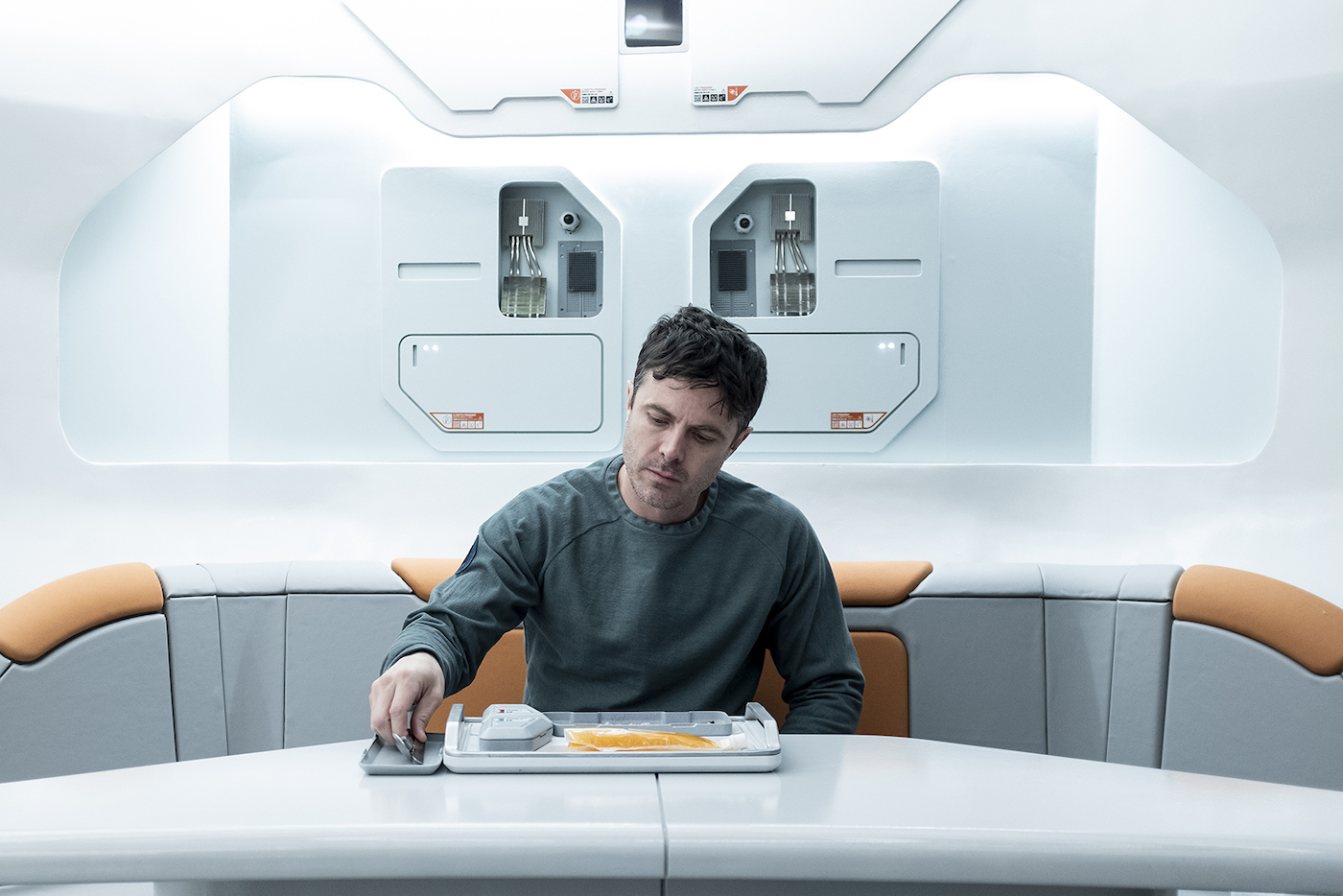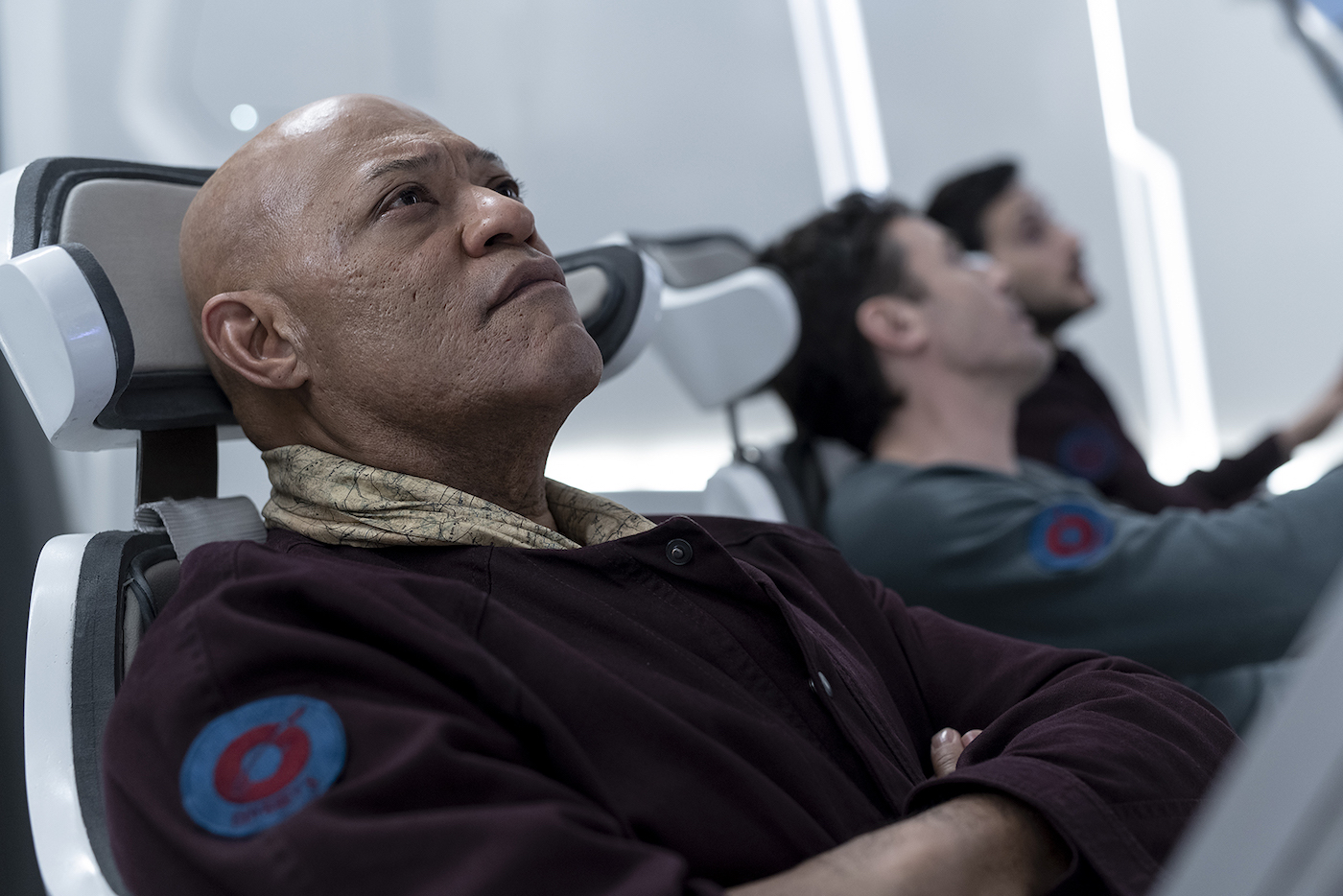‘Slingshot’ And The Mental Battle Of Long Space Missions
The new movie “Slingshot” depicts an astronaut’s mental health meltdown. How is NASA preparing for the challenges of long-term space travel?
 If you’re hallucinating about your situationship aboard a possibly fatal space mission, are you unfit for space travel?
If you’re hallucinating about your situationship aboard a possibly fatal space mission, are you unfit for space travel?
In “Slingshot,” an asteroid hits a spacecraft well into a yearslong mission to Titan, Saturn’s largest moon. Crew members played by Casey Affleck (“Manchester by the Sea”), Tomer Capone (“The Boys”), and Laurence Fishburne (“The Matrix”), must decide whether to turn back or keep going and risk their lives.
The film explores loneliness, desire, duty, and slow-building hysteria that crescendos as the crew loses communication with mission control and, separately, Affleck’s character obsesses about a romance back on Earth.
When real-life astronauts spend long periods in isolation, they must avoid becoming their own horror stories. As NASA aims to send astronauts to Mars, possibly as soon as the 2030s, space psychologists are eyeing the isolation of a 2.5-year mission and the up to 22-minute communication delays, and plotting ways to keep interplanetary travelers sane.
Even a brief break in mental stability from one crew member could endanger an entire mission. In 1985, astronauts aboard the Challenger space shuttle saw that for themselves when, two days into their mission, payload specialist Dr. Taylor Wang learned that his fluid dynamics experiments had failed. The research was years in the making and, according to reporting in Ars Technica, Wang became severely depressed and threatened to not return to Earth if flight controllers refused to let him reboot the project.
The incident frightened crew members and potentially spurred NASA to change the locking mechanisms on spacecraft hatches. Astronaut Henry Hartsfield, who commanded a Spacelab mission shortly after, later referred to a payload specialist, possibly Wang, who became “obsessed” with the hatch. “‘You mean all I got to do is turn that handle and the hatch opens and all the air goes out?’ It was kind of scary…It turned out it was innocent, but at the time you don’t know,” Hartsfield said.
Space agencies are still learning how prolonged isolation affects people. On missions, astronauts have less privacy, more noise, and a confined environment far from social support systems. A review of 100 studies about mental health in space found that stress from those conditions negatively affects cognitive function, mood, and social interactions. Some astronauts experience depression and hallucinations in space.

While longitudinal data from space missions is limited, there’s plenty of data on isolation’s negative effects on Earth. Research done during the COVID-19 pandemic, in Antarctica, and among aging populations shows that confinement and isolation can cause sleep disruptions, depression, and hallucinations, and significantly shorten lifespan. The effects vary wildly between individuals.
On the International Space Station (ISS), astronauts can call doctors and loved ones on Earth, but on a Mars mission or farther, relationship and health support must “be fairly autonomous,” says Dr. Suzanne Bell, who leads the Behavioral Health and Performance Laboratory, NASA’s primary lab for studying mental health in space.
“Mars is challenging,” Bell says. In terms of distance, isolation, and extremity, a Titan mission would be “ten times that.”
In her laboratory, Bell studies the psychological health of astronauts on the ISS. Her team is currently researching how to help astronauts solve problems—like landing a Mars spacecraft or supporting each other through loneliness—without real-time communication with mission control.
“That crew dynamic really has to be right,” she says. “You’ll need the social support to be able to thrive in that circumstance.”

NASA has historically used interviews with psychiatrists and psychologists and stress tests to evaluate astronaut applicants. Candidates might undergo isolation environment testing, and are selected for personalities that can “adapt and thrive” while maintaining strict exercise routines, managing high stress levels, and maintaining a balanced dynamic wherein group members rely on each other.
Dr. Kelley Slack, an organizational psychologist who specializes in space, says that candidates also do team exercises to assess their communication and performance under stress. NASA puts these dynamics under a microscope in long-term isolation studies wherein small groups live together in simulated space environments for up to a year. (This doesn’t always go well.) Data from isolation studies shows how to identify when a participant’s mood changes, how they respond to behavioral health training and treatments, and how motivation fluctuates.
These tests are designed to prevent a “Slingshot”-like break during a real mission, but if one happens, “there are drugs in the medical kit,” Slack says. “I don’t know that they’ve ever used the big ones, but there’s also duct tape in the medical box where they could restrain someone if they need to.”
Aside from Affleck’s romantic obsession, which was the most intriguing part, “Slingshot” is one cliché after another, ironically covering well-trodden ground for a story about journeying to unexplored territory. It’s worth watching if you’re looking for eerie space sci-fi, but don’t expect dramatic new ideas—just a few face-palm-inducing plot turns.
“Slingshot” is in theaters now.
Emma Lee Gometz is Science Friday’s Digital Producer of Engagement. They write SciFri’s “Science Goes To The Movies” series and are a journalist and illustrator based in Queens, NY.